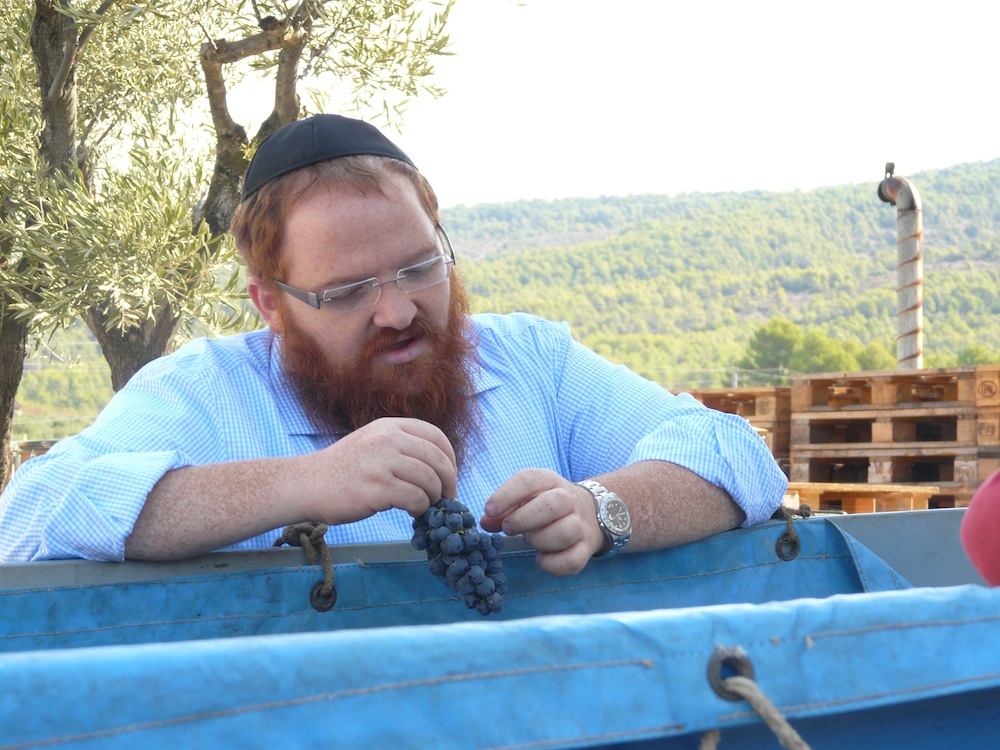Wine Talk: Jewish gain in Spain
By ADAM MONTEFIORE
Choosing the finest kosher wineries in the world is a common preoccupation of collectors of fine kosher wine. Those from Israel might nominate Domaine du Castel or the Yatir Winery. Those with a bias toward French wines may choose one of the French wineries that make occasional kosher cuvées, such as Château Valandraud or Château Léoville Poyferre. Americans may choose Covenant.
However, there is one candidate that will be on anyone’s shortlist of the finest kosher producers in the world. The Capcanes Winery (pronounced Cap–sar-ness) in Spain produces not only wonderful non-kosher wines but also kosher wines that have won acclaim in the non-kosher wine world!
Capcanes is a village in the Montsant region, near Priorat. In 1933 five families started a cooperative called Celler de Capcanes that would handle their grapes. They were able to offer large amounts of bulk wine for sale and even sold grapes without processing them. One of the prime buyers for many years was the world-famous Torres Winery. This was the quality, pioneering winery of the whole region. Owner Miguel Torres was keen to source the finest grapes for his own wines and was among those who recognized the quality of the Capcanes fruit.
The Capcanes Winery continued in its undistinguished way until, in 1995, the small Jewish community of Barcelona asked if it was prepared to produce a kosher wine. As a result of this request, Capcanes decided to buy equipment to allow it to handcraft a special wine from the best plots of its vineyards.
The kosher wine produced, Peraj Ha’abib (“Spring Flower”), was a revelation, and it was not only Jewish customers who raved about the wine. On the strength of this success, the winery was overhauled with a major investment, and the company strategy was completely changed from mass to quality. Despite the fact that kosher wine was only 2 percent of their total production, the winery transformed itself because of a Jewish request and the success of a kosher wine.
So in this very Catholic area, it was a kosher wine that encouraged Capcanes to commit to quality!
In the wine world, cooperatives tend not to have the best image or the best wines.
Therefore, it was a very impressive turnaround, in my view replicated by the Carmel Winery here in Israel. Capcanes now makes estate, boutique-style wines of the very highest level of quality from within a cooperative structure.
Capcanes today has 250 hectares of vineyards, which rise from an altitude of 150 meters to 550 meters above sea level. Soils are a mixture of slate and granite with some clay and sand. Most of the wines are made from Garnacha (a.k.a. Grenache), Carinena (a.k.a. Carignan) grapes, the Spanish variety Tempranillo and the international varieties Cabernet Sauvignon, Merlot and Syrah. Today there are 170 members of the cooperative and 80 growers. The winery produces one million bottles a year. Capcanes is putting Montsant on the wine map.
In a continuation of the Jewish connection, the Capcanes wines that have received the best third-party recommendations are those that are kosher. In the Wine Advocate, the Peraj Ha’abib 2009 scored 95 points, and the Flor de Flor del Primavera 2007 scored 94 points. The Wine Advocate is the newsletter published by Robert Parker, the world’s most influential wine critic. Ninety-five is the highest score ever awarded to a kosher wine by the Wine Advocate. It is also the highest score for any Capcanes wine.
This runs against the norm. There are other famous non-kosher wineries that also make kosher wines. However, it is my personal view that wineries that specialize in kosher wines make better wines than, say, the famous name from France that occasionally makes a kosher wine, in addition to its regular non-kosher portfolio. It is a question of focus and priorities. However, Capcanes is obviously the exception to the rule.
Finest Kosher wines from Spain:
Capcanes produces three kosher wines, which are listed below. If ever there was an opportunity to say these are great world-class wines that just happen to be kosher, this is it.
Peraj Petita 2009
This wine is made from Grenache, Tempranillo and Carignan. It is part aged for 10 months in a combination of French and American oak barrels and in stainless steel tanks. It is a bright, fruity easy-drinking wine with a nose of strawberries and cherries and a soft backdrop of vanilla.
Peraj Ha’abib Flor de Primavera 2009
Peraj Ha’abib is made up of equal percentages of Grenache, Carignan and Cabernet Sauvignon. It is aged for 14 months in a mixture of new and used French oak barrels. The wine is full bodied, sophisticated with aromas of blackberry and cherry fruit, mouth-filling flavor and a very long, complex finish.
La Flor del Flor de Primavera 2007
This is made from 100% Grenache from 100-year-old vines and aged for 18 months in new and one-year-old oak barrels. It is medium-bodied and elegant, with a delicately floral, almost perfumed nose of red fruit and a hint of wild herbs. The wine has excellent length with a satisfyingly clean finish. Rare, only 2,500 bottles were made
Adam Montefiore works for the Carmel Winery and regularly writes about wine for Israeli and international publications.
Adam@carmelwines.co.il


